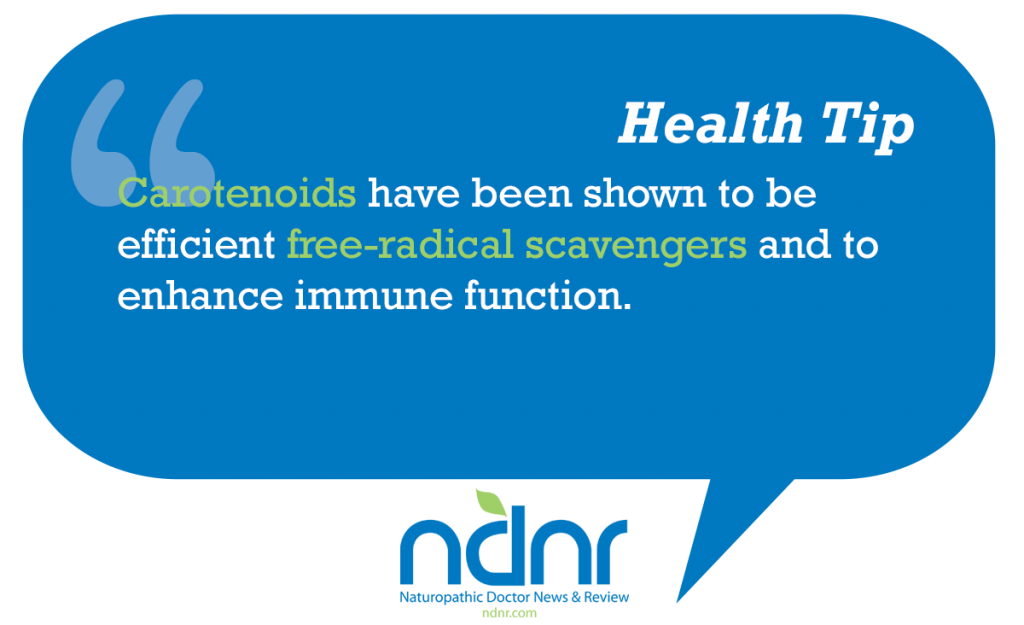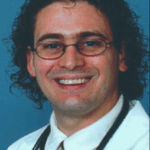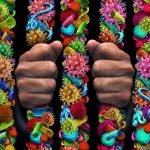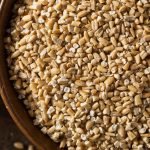Optimization of Cellular Environment: The Key Factor to Health
Darrell S.C.S. Misak, ND, RPh
Identification of essential nutrition for human biological cellular optimization is a desire of the nutritional research world, functional medicine practitioners, and the overzealous patient seeking the Holy Grail answers on the internet. Is there such a formulation? I want to believe that an unadulterated whole foods, balanced diet could provide such a formula, but practice has shown that diet and nutrition constitute only a piece of the puzzle when considering cellular optimization.
Inherent to naturopathic philosophy is the core belief, and practiced observation, of the healing power of nature. When you consider this observation on a biological level, it is readily explained by the process of homeostasis, where every cell is as healthy as it can be based on its adaptation to a given environment. This lays the foundation for another naturopathic theory to explain poor health; namely, the historical theory of toxemia, or today’s total load theory. The basis of these theories and homeostasis suggests that cellular environment is the key factor to health.
Theoretical Factors to Consider
Other theories of interest with regard to cellular optimization include the “fetal origins” hypothesis and “nutritional programming” concepts. These concepts propose that alterations in fetal and/or developing children’s nutrition and endocrine status result in developmental adaptations that can permanently affect structure, physiology, and metabolism, thereby predisposing individuals to disease in their adult life.1,2 Both of these concepts have been demonstrated in scientific observations and are now referred to as the “predictive adaptive response” to environmental stimuli.3 Particular concern also appears in environmental health literature with reference to the “research needs” for the risk assessment of health and environmental effects of endocrine disruptors, particularly organochlorine compounds, polychlorinated biphenyls (PCBs), and dioxins.4 The current assessment of the U.S. Environmental Protection Agency (EPA) confirms these cancer concerns.5 However, in reality this “research need” and current assessment only touch the surface of the environmental impact studies needed to create a basic understanding, testing and proving of the total cell load hypothesis. In the meantime, a practical generalized supportive approach that considers these factors is what we can offer.
With a recent study by the environmental working group showing the umbilical cord blood of 10 random American newborn babies each having an average of 213 chemicals present,6 we need to rethink our approach to treating the whole person. Besides supporting such efforts as the proposed Kid-Safe Chemicals Act,6 we need to educate our patients on the importance of adopting a personal environmental protection lifestyle and directing them to the technologies that can provide solutions. In reality, what we are proposing is for patients to modify their cellular environment to minimize the cellular load while providing nutrition to optimize their cellular efficiency to handle that load. The basic approach is to encourage pure food, pure water, pure air, and electromagnetic field (EMF) protection as the basis of any program, while educating and/or providing clients with the products to meet those needs.
Diet Quality as a Primary Concern
The concept starts with diet. As you understand that all cells and their components are composed of protein, fats, carbohydrates, water, and trace minerals, quality food means quality cells. Just watch the movie Super Size Me, apply this concept along with the total load theory and you can explain Morgan Spurlock’s illness and the body’s wonderful healing capacity through his diet change alone. Of course, we all wish we could afford, and find, 100% biodynamic organic produce and meats and wild caught low-mercury fish, however reality suggests otherwise. In addition to your preferred whole foods diet, be sure to educate about the importance of organic foods, using vegetable washes and filtered water when cleaning produce to reduce chemical residue exposures. Diet should also be used to provide the foundation for ingesting food constituents routinely found in nutritional research that optimizes cellular health.
Nutritional Research Considerations
Nutritional research suggests the importance of many food constituents; however flavonoids, carotenoids, polyphenols, and essential amino acids regularly appear regarding optimal cellular health.7-15,18,19 Nutritional research suggests the ability of these constituents to modulate and improve DNA repair, provide vascular protection, affect cellular proliferation, cytotoxicity, apoptosis and more.7-9 This explains the hype of “super juices” made from goji berry, mangosteen, açaí berry, pomegranate, etc. and their positive findings on circulation, immune function, and general well-being. On a simple note, this nutritional research suggests a colorful high-fiber diet with quality protein sources along with green tea or even a little red wine. However, we need to be the educated practitioner with the ability to teach and explain our recommendations, not just promote another miracle product.
Flavonoids or bioflavonoids are a class of plant secondary metabolites that are not directly involved in the normal growth, development, or reproduction of cells.10 In reference literature, flavonoids are referred to as “nature’s biological response modifiers.” Experimental evidence has shown flavonoid ability to modify body reactions to allergens, viruses, and even carcinogens to claim this reference.12,14 Additionally, flavonoids have also shown independent anti-inflammatory, antimicrobial, and anticancer activity.12-15
Flavonoids are the most common group of polyphenolic compounds in the human diet and are recognized for their antioxidant activity.12 If your patient isn’t already drinking a flavonoid-rich daily “super juice,” encourage fresh or frozen organic berries (blueberry, blackberry, raspberry, etc.), citrus fruits, parsley, tea (especially white and green tea), red wine, and even dark chocolate with a cocoa content of 70% or greater.16,17
Carotene is an orange photosynthetic pigment responsible for the orange color of many fruits and vegetables and an important part of plant photosynthesis. In lower concentrations carotenoids impart the yellow coloration to milk-fat, butter, and egg yolks.18 Research suggests that diets rich in carotenoids are associated with improved health and decreased mortality for a number of chronic illnesses. Specifically, carotenoids have been shown to be efficient free-radical scavengers and to enhance immune function.19
Foods rich in carotenes include sweet potatoes, carrots, cantaloupe, spinach, kale, chard, turnip greens, collard, dandelion greens, cilantro, parsley, broccoli, watercress, winter squash, and pumpkin.16,17 Encourage these foods along with green tea and complete proteins (organic free-range meats, poultry, eggs, fish, and dairy), which provide all the essential amino acids11 additionally shown to enhance cellular function. Because carotenes are fat-soluble,18 absorption from these foods is enhanced if eaten with fats, which are another key in cellular optimization.
Understand the Fats
We all should be aware of the benefits of omega-3 fatty acids and their role in both biochemical prostaglandin synthesis and their application in general clinical practice. Therefore it is not my goal to bring forth literature review, but to provoke philosophical thought into their application to cellular optimization. If we look back at the Super Size Me saga, a philosophical understanding of what occurred places fatty acid utilization as a major concern for cell function.
In the movie, Spurlock began to develop a fatty degenerative liver with associated increased cholesterol, high blood pressure, and weight gain. Philosophically speaking, what happened is that Morgan’s capacity to handle the toxin and saturated fat load was exceeded, and the lack of essential nutrients and fatty acids led to fat deposition to increase toxin storage capacity. What should be noted is that we use essential fatty acids for every complaint he developed, and more importantly is that his follow-up with a raw whole foods diet corrected all the concerns in the following 30 days; a diet rich in flavonoids, carotenes and essential fatty acids as found in leafy greens, seeds, and nuts.
Considering the Mind
Outside of diet considerations on cellular health, we must always consider the total load theory and the environmental impact on cellular function. As mentioned, a focus on pure air, food, water, and EMF protection incorporates this philosophy, but another area to consider is the mind.
Hopefully, every reader has witnessed physical health expression and associations with mental/emotional well-being. On a quantum level where everything we understand breaks down to energy and universal interactive associations, mental thoughts and emotional expression can theoretically affect cellular efficiency. The study of psychophysiology and neurofeedback has applications and research in many areas including learning disabilities, seizures, chronic pain, sleep disorders, etc. 20 confirming neurohormonal associations, and thus a need to address mental/emotional health when considering optimum cellular function. I personally recommend Emotional Freedom Technique and Thought Field Therapy to address numerous health concerns, however this subject is an article of its own and too vast to cover here. Having an awareness of neural feedback associations, and learning when to refer your clients to address mental/emotional concerns, is what I want to encourage and accomplish here.
Putting it All Together
Finally, because we live in a nutritionally depleted world,21 the need for supplementation must be considered with regards to cellular optimization. Most NDs have found a multivitamin product of their liking to provide basic nutritional support, along with other products that probably contain various flavonoids, carotenes, essential fatty acids, and trace minerals to provide a specific activity of their desire. There are also specialized products claiming to provide essential sugars or substances to enhance cellular utilization of nutrients, however that is where I encourage your own research to separate hyperbole from reality. What I do nutritionally recommend is substances that enhance cellular detoxification mechanisms.
You should be aware that Phase I detoxification mechanisms of oxidation are not contained to the liver, but in every living cell, whereas Phase II conjugation occurs in the liver. Functional detoxification is an enormous subject and the study into detoxification pathways, or symptoms of inefficient detoxification, lays the foundation that may help explain most symptoms we see in practice and the aforementioned theory of toxemia. The overall goal again is to support and improve cellular and whole body burden elimination to a point that exceeds body and cellular burden accumulation. With this said, consideration of all health concerns should include nutrients and herbs that improve cellular and whole body detoxification.
Since Phase I by-products are oxygen free radicals, typically more toxic than the parent compound, antioxidant support is essential to handle the cellular load. Otherwise, applying traditional whole body detoxification therapies that enhance cellular blood flow, toxin mobilization, and toxin elimination (eg, far-infrared sauna, constitutional hydrotherapy), along with Phase II nutritional cofactors will improve any client response. I suggest reviewing NDNR vol. 4 issue 12 for insights into detoxification techniques and herbal supportive options, otherwise multiple companies produce quality products that enhance liver detoxification and Phase II pathways.
I personally use a variety of products based on a client’s respective needs and hopefully will more fully elucidate on this subject in the future. In the meantime, trust in your training and the knowledge you possess while testing the outline for cellular optimization I have provided. You will see improvements both personally and professionally.
 Darrell S.C.S. Misak, ND, RPh graduated Pharmacy School from West Virginia University and worked at Duke University Medical Center in clinical pharmacy before moving to Portland and becoming a 2000 graduate from National College of Natural Medicine. His office is located in Pittsburgh, PA where he runs a private practice.
Darrell S.C.S. Misak, ND, RPh graduated Pharmacy School from West Virginia University and worked at Duke University Medical Center in clinical pharmacy before moving to Portland and becoming a 2000 graduate from National College of Natural Medicine. His office is located in Pittsburgh, PA where he runs a private practice.
References
- Hanson MA, Gluckman PD. The developmental origins of health and disease. Basic Clin Pharmacol Toxicol. 2008;102(2):90-93.
- Godfrey KM, Barker DJ. Fetal nutrition and adult disease. Am J Clin Nutr. 2000:71(suppl 5):1344S-1352S.
- Lucas A. Role of nutritional programming in determining adult morbidity. Arch Dis Child. 1994;71(4):288-290.
- Kavlock RJ, et al. Research needs for the risk assessment of health and environmental effects of endocrine disruptors: a report of the U.S. EPA-sponsored workshop. Environ Health Perspect. 1996;104(suppl 4):715-740.
- Birnbaum LS, Fenton SE. Cancer and developmental exposure to endocrine disruptors. Environ Health Perspect. 2003;111(4):389-394.
- Kid-Safe Chemicals Act. Environmental Working Groug Web site. http://www.ewg.org/kid-safe-chemicals-act-blog/kid-safe-chemicals-act/. Accessed October 22, 2009.
- Collins AR, et al. Nutritional modulation of DNA repair in a human intervention study. Carcinogenesis. 2003;24(3):511-515.
- Kuntz S, et al., Comparative analysis of the effects of flavonoids on proliferation, cytotoxicity, and apoptosis in human colon cancer cell lines. Eur J Nutr. 1999;38(3):133-142.
- Pitchford P. Healing with Whole Foods: Asian Traditions and Modern Nutrition. Berkeley, CA: North Atlantic Books; 2002.
- Flavonoids (isoflavonoids and neoflavonoids). IUPAC Compendium of Chemical Terminology Web site. http://goldbook.iupac.org/F02424.html. Accessed October 22, 2009.
- Nutrition for Everyone. Centers for Disease Control and Prevention Web site. http://www.cdc.gov/nccdphp/dnpa/nutrition/nutrition_for_everyone/basics/protein.htm. Accessed October 22, 2009.
- Spencer JP. Flavonoids: modulators of brain function? Br J Nutr. 2008;99(Esuppl 1):ES60–ES77.
- Ververidis F, et al. Biotechnology of flavonoids and other phenylpropanoid-derived natural products. Part I: Chemical diversity, impacts on plant biology and human health. Biotechnol J. 2007;2(10):1214-1234.
- Yamamoto Y, Gaynor RB. Therapeutic potential of inhibition of the NF-κappaB pathway in the treatment of inflammation and cancer. J Clin Invest. 2001;107(2)135-142.
- Cushnie TP, Lamb AJ. Antimicrobial activity of flavonoids. Int J Antimicrob Agents. 2005;26(5):343-356.
- Ursini F, et al., Optimization of nutrition: polyphenols and vascular protection. Nutr Rev. 2009;57(8):241-249.
- Mateljan G. The World’s Healthiest Foods: Essential Guide for the Healthiest Way of Eating. George Mateljan Foundation; 2006.
- Paiva SA, Russell RM. Beta-carotene and other carotenoids as antioxidants. J Am Coll Nutr. 1999;18(5):426-433.
- Diplock AT, et al. Functional food science and defence against reactive oxidative species Br J Nutr. 1998;80(suppl 1):S77–S112.
- Masterpasqua F, Healey KN. Neurofeedback in psychological practice. Prof Psychol Res Pr. 2003;34(6):652-656.
- Callaway L. Nutrient levels in organic vs. conventional foods. ND News & Review. 2008;4(9):10.










